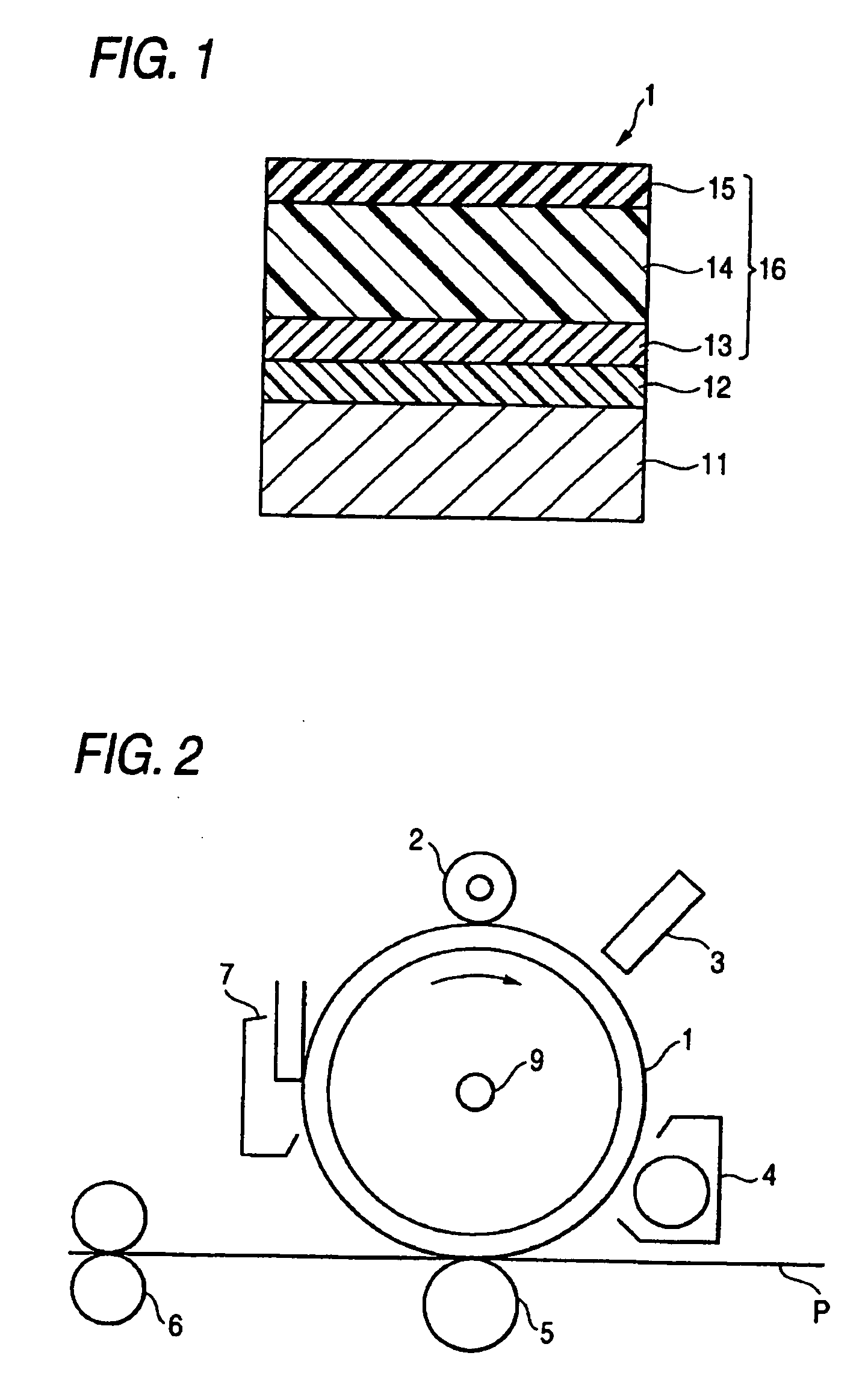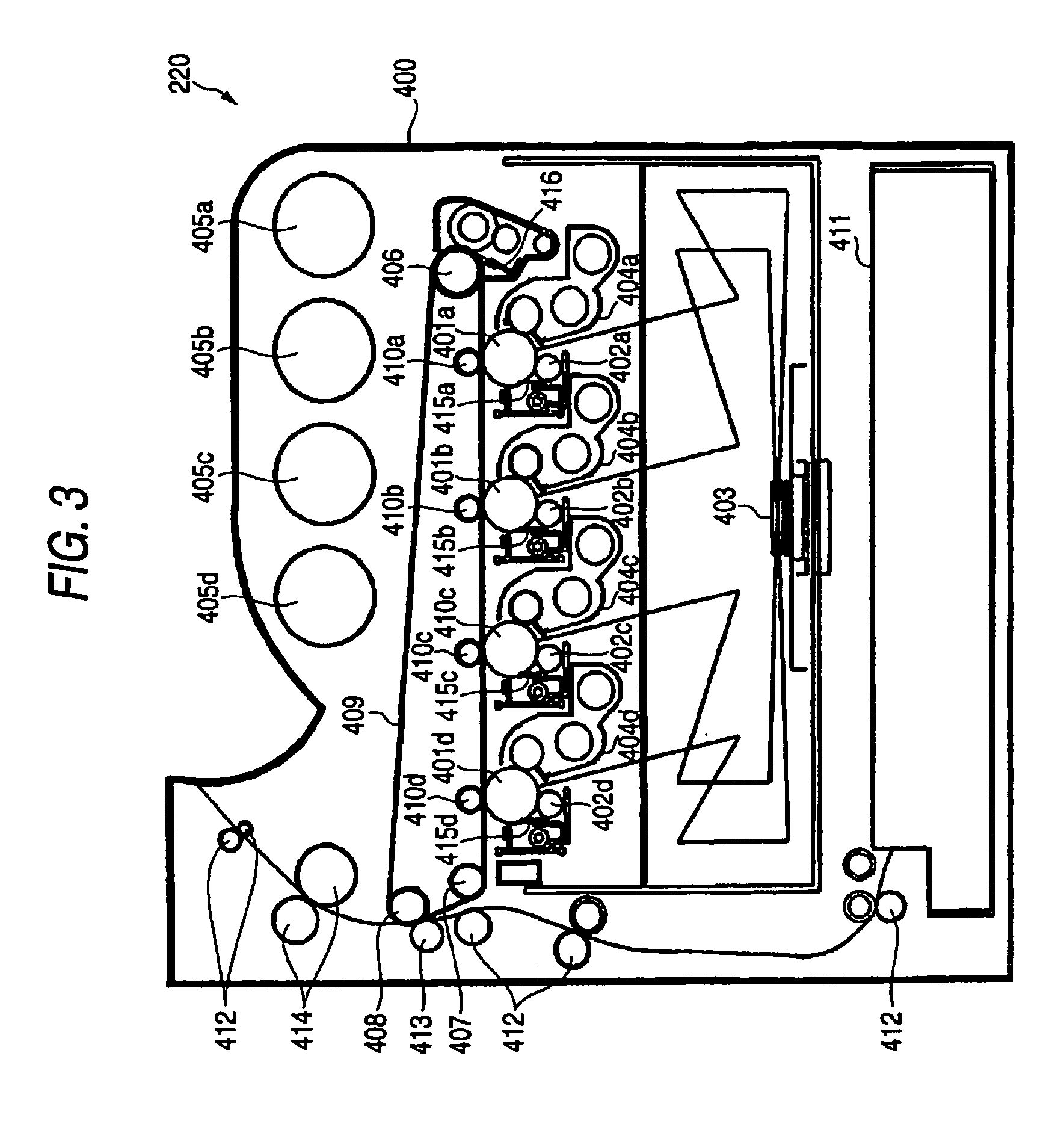Crosslinked siloxane outmost layer having aromatic siliconcontaining compounds for photoreceptors
a technology of crosslinked siloxane and outmost layer, which is applied in the field of aromatic siliconcontaining compounds, can solve the problems of image problems and strains of resulting materials, and achieve the effects of improving the wear rate of the photoreceptor, sacrificing electrographic performance, and improving results
- Summary
- Abstract
- Description
- Claims
- Application Information
AI Technical Summary
Benefits of technology
Problems solved by technology
Method used
Image
Examples
examples 1-9
[0098] An aromatic silicon-containing compound is prepared having the structure of formula (I), where X is —O—, L is —C3H6—, the (RO)3-nRnSi— groups are (iPrO)2MeSi—, and Ar is one of formulas (II-1) to (II-44). In the following Examples, the aromatic silicon-containing compound is prepared having the structure of formula as defined herein are referred to as compounds (I-#), where # refers to the respective compounds II. Thus, compound (I-1) is a compound of formula I as defined herein, where Ar is formula (II-1).
example 1
Synthesis of the Aromatic Silicon-Containing Compound (I-1)
[0099] Bisphenol A (BPA) (22.83 g) was dissolved in isopropanol (130 mL) in a 500 mL round-bottomed flask. To the solution was added a solution of 20 wt % of potassium isopropoxide in isopropanol (98.19 g) through a dropping funnel. After addition, the solution was stirred at room temperature for 3 hours and the excess isopropanol was removed by rotary evaporation. The remaining solid was dissolved in dimethylformamide (DMF) (360 mL). To the solution was added iodopropyldiisoproxymethylsilane (72.66 g) and the temperature was maintained at about 70° C. for an hour, then cooled to 25° C. Potassium iodide (60 g) was added into the solution and it was stirred for about an hour. Cyclohexane (300 mL) was added to extract the product. The cyclohexane layer was collected and washed with deionized water and brine, and dried over sodium sulfate. The excess cyclohexane was removed by rotary evaporation and the final product was purif...
example 2
Synthesis of the Aromatic Silicon-Containing Compound (I-2)
[0100] 4,4′-(Hexafluoroisoproylidene)diphenol (25 g) was dissolved in isopropanol (100 mL) in a 500 mL round-bottomed flask. To the solution was added a solution of 20 wt % of potassium isopropoxide in isopropanol (73 g) through a dropping funnel. After addition, the solution was stirred at room temperature for 3 hours and the excess isopropanol was removed by rotary evaporation. The remaining solid was dissolved in dimethylformamide (DMF) (250 mL). To the solution was added iodopropyldiisoproxymethylsilane (54 g) and the temperature was maintained at about 70° C. for an hour, then cooled to 25° C. Potassium iodide (40 g) was added into the solution and it was stirred for about an hour. Cyclohexane (200 mL) was added to extract the product. The cyclohexane layer was collected and washed with deionized water and brine, and dried over sodium sulfate. The excess cyclohexane was removed by rotary evaporation and the final produ...
PUM
 Login to View More
Login to View More Abstract
Description
Claims
Application Information
 Login to View More
Login to View More - R&D
- Intellectual Property
- Life Sciences
- Materials
- Tech Scout
- Unparalleled Data Quality
- Higher Quality Content
- 60% Fewer Hallucinations
Browse by: Latest US Patents, China's latest patents, Technical Efficacy Thesaurus, Application Domain, Technology Topic, Popular Technical Reports.
© 2025 PatSnap. All rights reserved.Legal|Privacy policy|Modern Slavery Act Transparency Statement|Sitemap|About US| Contact US: help@patsnap.com



